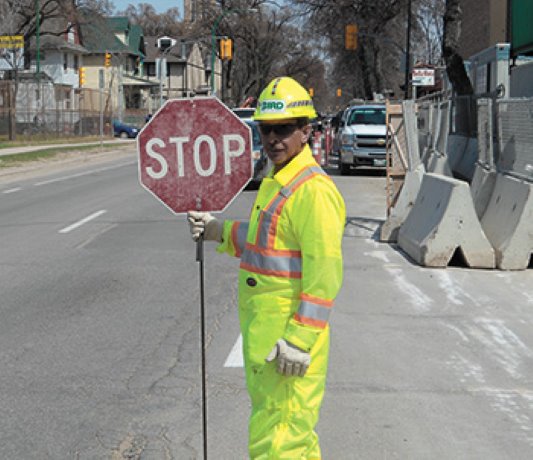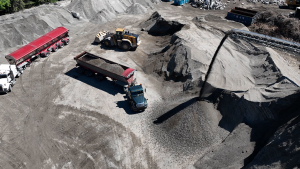Holding a sign on the side of a highway at a construction site can be a dangerous job. Last August, flagger Ashley Richard was struck and killed by a car near Weyburn, Saskatchewan on her first day on the job.
Last August, flagger Ashley Richard was struck and killed by a car near Weyburn, Saskatchewan on her first day on the job.
The driver, Keith Dunford of Regina, is just now before the courts.
Three flaggers have been killed in B.C. since 2006.
Earlier this year, the Province of Manitoba announced amendments to Workplace Safety and Health Regulations to include new and clarify existing requirements to provide stronger protection for flaggers.
These regulation updates were approved December 2012, and took effect February 2013.
Key changes to Part 20 of the Regulation (Vehicular and Pedestrian Traffic) prohibit the use of personal electronic devices, enhance requirements for high visibility personal protective equipment, and standardize training for flagpersons.
New training rules require workers to have a valid flagger training certificate, issued by a person or organization that has been approved by the director of Workplace Safety and Health.
Workers must also demonstrate competency in applying this training at the workplace.
The new regulations state that a flagperson training certificate program be based on a combination of in-class coursework and practical applications covering the following:
The requirements of the City of Winnipeg, Manual of Temporary Traffic Control in Work Areas on City Streets training program, as it applies to flagpersons or the Flagger Training Manual issued by Manitoba Infrastructure and Transportation;
The impacts of environmental factors, including heat, cold, sun, and hours of darkness;
The use of personal protective clothing and equipment;
Working around heavy equipment;
Proper hand signal communication;
Communication with the travelling public, including responding to aggressive drivers and violence prevention;
Positioning, signage, and barrier usage;
Identifying an escape route;
Reporting near misses and incidents; and
Emergency procedures.
Employers must also ensure that flaggers are provided with the required personal protective equipment and carry their training certificate with them at all times.
Electronic devices will only be allowed for communicating with fellow workers (where visibility is obstructed).
“We have our own safety training procedures and we already enforce these regulation changes to a certain extent,” said John Siwicki, safety manager for Bird Construction.
“But, the amendments to the regulations should make safety measures more consistent throughout the industry.”
Speaking for the Manitoba Heavy Construction Association (MHCA), Glen Black, its workplace safety program director, said his association and its members support any changes to legislation that advance safety.
Although, they would have appreciated a little more notice before the legislation was passed in order to be better prepared.
“There was little or no consultation with us before the changes were announced,” Black noted.
“Since we learned of the changes, we have held a series of meetings with members to inform them of the changes.”
He reported that the MHCA has also established a best practices training program for flag persons so that everyone in the industry will be on the same page.











Recent Comments
comments for this post are closed